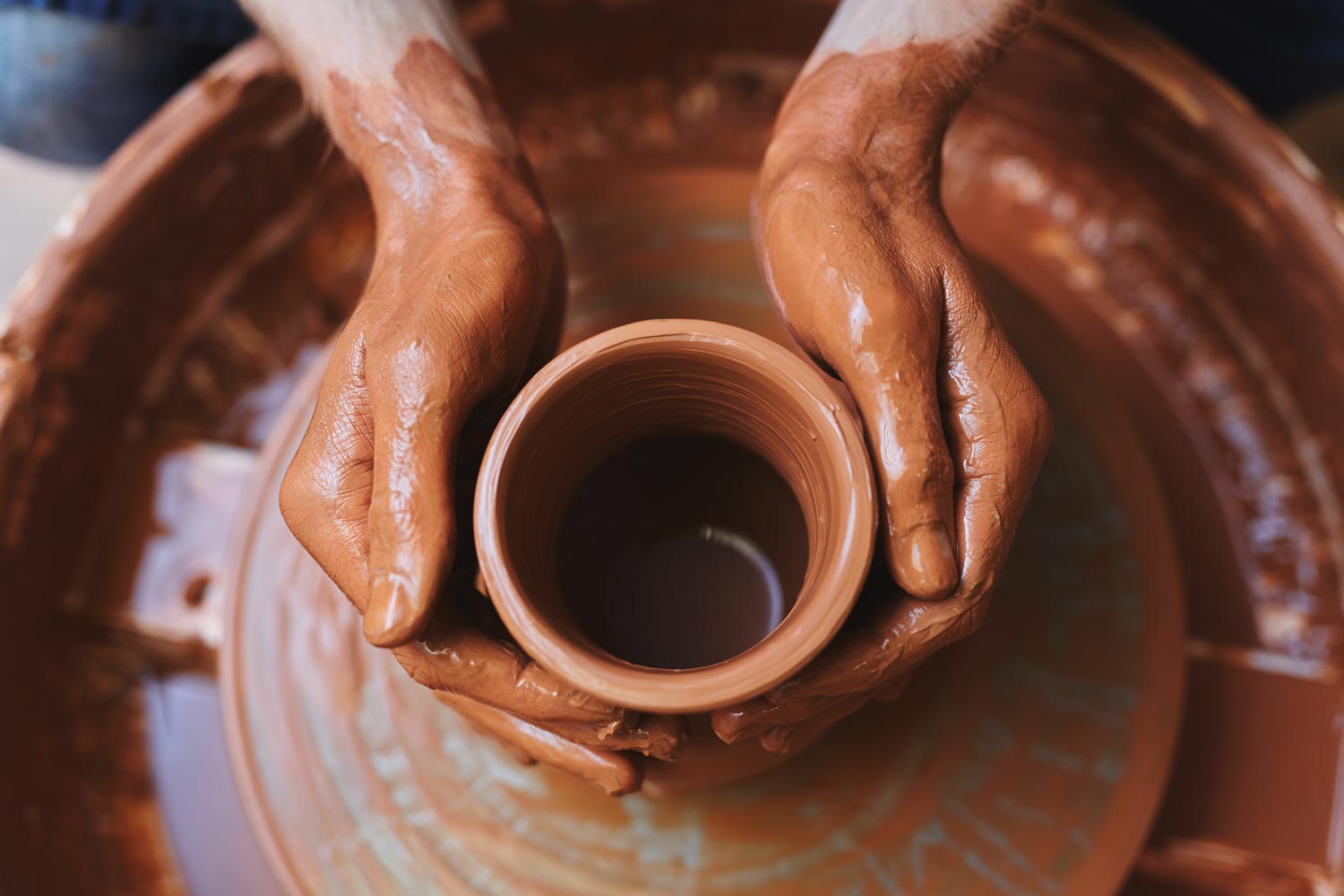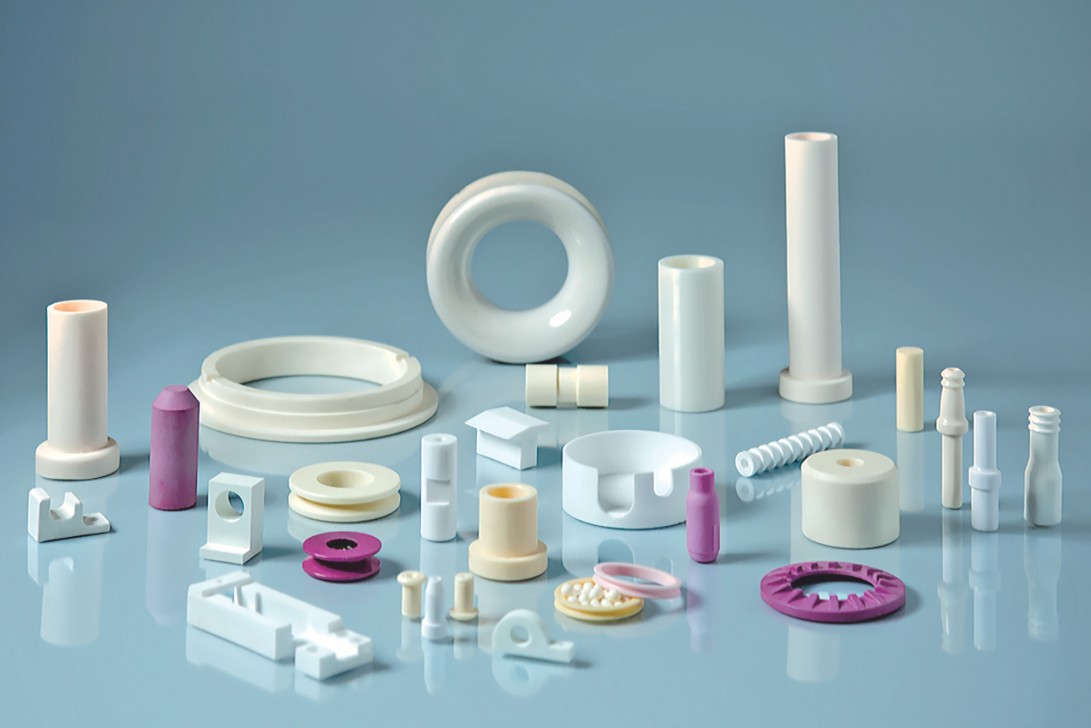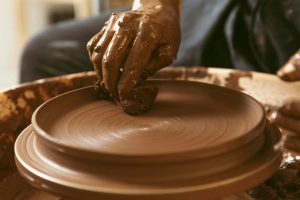Types of ceramics
Types of ceramic in terms of material
Ceramics are divided into two categories: Standard (traditional) and engineering ceramics. Standard ceramics, known as traditional ceramics, include ceramics like chinaware, all sorts of tiles, such as tiles for the floor and walls, ceramic sanitary tools, and other ceramic products installed using ceramic adhesive. Consumable raw materials for this type of ceramic are usually clay, silica feldspar, and other materials. As a result of the abundance and cheapness of their raw materials, standard ceramics are common in Iran, and, also, as a result of the high value-added of their products, this industry has experienced significant growth and is still developing.
Processed mineral raw materials and common construction techniques are used to produce standard ceramics. There are several divisions for each group of standard ceramics; for example, one can mention provided divisions about chain wares which are sometimes based on their application and sometimes based on the properties of soft and rigid chain wares. Generally, ceramics of this type are made with clay, feldspar, and silica, but other materials can also be utilized if necessary. Engineering ceramics are used to respond to specific requirements such as higher thermal strength, better mechanical properties, particular electric properties, and chemical resistance.
These ceramics are:
1- Pure oxide ceramics: Oxides like Alumina (Aluminum oxide), zirconia (Zirconium oxide), Thoria (thorium oxide), beryllia (beryllium oxide), and magnesia (magnesium oxide) are mostly used.
2. Non-oxide ceramics: These ceramics have all kinds of nitride (aluminum nitride, silicon nitride, and boron nitride, which are refractory and have high durability in high temperatures), carbide (such as silicon carbide and boron carbide), and boride.
3- Composite compound materials (ceramic-metallic): Both ceramic and metallic phases exist in these materials.
Introduction of Porcelain Ceramic
Porcelain ceramics are ceramics with water adsorption percentages lower than 0.5% from the kaolin soil compounds and are cooked at a temperature of around 1200 C.
Compared to other standard ceramics, porcelain ceramics are highly compact, and the porosity in these ceramics is very small (roughly zero). Low porosity is the principal property of porcelain ceramics which causes desirable technical and chemical performance and high durability in this type of ceramic. In addition, porcelain ceramics are highly resistant to chemicals and detergents. High durability against corrosion and high fracture resistance, along with easy cleaning of porcelain ceramics, made them an ideal choice in industrial and congested spaces.
View more: “What is porcelain ceramic; types and functions”
Types of ceramic in terms of application
Standard and traditional ceramics have various applications and are divided based on application:
- Cement productions (like hydraulic cement that are used in construction industries)
- Whiteware (including crockeries, chain wares, and chain ware compounds)
- glazes
- Building clay productions (mostly made of bricks and tiles)
- refractory
- Glasses
- abrasive materials
In terms of function, engineering or industry ceramics can be divided into three groups functional engineering, structural engineering, and biological ceramics. Each classification has a specific performance, as stated in the following:
The first subset is known as functional engineering ceramics, which includes electroceramics, superconducting ceramics, semiconductor ceramics and electrical insulators, ceramic magnets, etc., and some productions of this subset are:
- Piezoelectric and pyroelectrics
- Insulators and ceramic dielectrics of insulators and capacitors
- Ceramic semiconductors
- Ceramic fuses
- Ceramic sensors
- Magnetic ceramics
- Optic ceramics
- electro-optic
Another subset of engineering ceramics is structural ceramics which includes engineering ceramics with better thermal and mechanical properties, such as ceramic oxide, non-oxide, and complex materials. In this set of ceramics, mechanical and thermomechanical properties are the most important ones. Some crucial structural engineering ceramics are:
- Zirconia systems
- Microfilters and membranes
- Catalysts and ceramic foams
- Glass and glass-ceramics
- Ceramic composites and cermet
The third subset is biological ceramics, which includes all types of biological ceramics and nanoceramics. Biological ceramics are drug-release systems, implants, and biodegradable ceramics.
Types of ceramic in terms of the fabrication method
Selecting a mechanism and technique to shape a ceramic piece depends on various parameters, including the following:
- Length to diameter ratio of the piece
- Size and complexity of the piece and mold design
- Raw materials type
- The possibility of forming suspension or slurry
- Powder properties
- The porosity of the piece
- Accessibility of facilities
- The final price in association with internal, regional, and global competition
Generally, in standard ceramics, traditional methods like slurry casting and shaping clay are used. These methods are available in the country with inexpensive device costs. Because of the nature of methods, including the presence of water in the supply of raw materials and even in the provision of bodies, the final products have porosity. Furthermore, new techniques and machinery are used to improve properties in addition to the methods mentioned above.
Ceramic applications in various industries
Due to their unique properties, such as durability, resistance to temperature, and chemical stability, ceramics has many applications in our daily lives. We all use ceramic dishes like porcelain, clay, and stone utensils to cook and serve food. These utensils are used as tableware because of their significant resistance to heat, durability, attractiveness, beauty, and hygiene. Our house and workplace were furnished with ceramics, and the bathroom, kitchen, and other rooms were fitted with ceramic tiles. Porcelain ceramics are available in various colors and figures, which makes them a popular choice for house decoration.
Ceramic materials have been used in art and decoration for thousands of years. Ceramic statues, flowerpots, and statues are popular decorative tools used in our houses. The aesthetic appeal of ceramic materials like chainware and clay makes them ideal for jewelry production. Among jewelry enthusiasts, ceramic marbles, earrings, and pendants are popular.
Ceramic materials like zirconia and silicon carbide are used in cutting tools like knives and scissors because of their high stiffness and resistance to corrosion. In the following, we mention some of their new and more advanced applications.
Ceramic applications in medicine
Ceramic materials have a vast usage in medicine due to biocompatibility, significant mechanical properties, and resistance to corrosion and abrasion. Some applications of ceramics in medicine are:
1- dental implant: ceramic materials such as zirconia and alumina are used in dental implants because of biocompatibility, resistance to abrasion, and durability. They also can provide a more natural appearance than metallic implants.
2- Joint replacement: Because of the resistance to corrosion and high biocompatibility, ceramic materials are used in joint replacement, such as hip and knee joints. Ceramic components can reduce inflammation and improve longevity compared to traditional metallic components.
4- Graft substitutes: Ceramics like hydroxyapatite and tricalcium phosphate are used as graft replacements because of their similar components to natural bones. These materials can boost bone growth and gradually be adsorbed to the body.
5- Surgery tools: Because of the resistance to corrosion and abrasion, ceramic materials are used in surgery tools. Also, they can be easily sterilized compared to traditional metallic tools.
6- Diagnostic and imaging apparatuses: Due to significant electrical and thermal properties
Ceramics are commonly used in diagnostic and imaging tools like X-ray tubes, ultrasound transducers, and dental imaging screens due to their electrical and thermal properties.
Ceramic application in the automobile industry
Because of significant mechanical properties like durability, rigidness, and resistance to corrosion, ceramic materials have a variety of applications in the automobile industry. Ceramic
brake linings are increasingly used in vehicles with high efficiency because of their high resistance to temperature and corrosion. Brake linings can tolerate high temperatures without losing the function of their brake and, as a result, improve safety and reliability.
Due to their durability, stiffness, and resistance to high corrosion, ceramic materials such as silicon nitride and alumina are used in parts of engines, including poppet valves, pistons, and turbochargers. Ceramic components of the engine can resist high temperatures, reduce corrosion and friction, and improve fuel efficiency.
Ceramic bearings and bushings can be used in the automobile industry due to their high corrosion resistance, low friction, and high durability. Compared to metallic bearings, ceramic bearings can handle higher speeds and loads and provide superior performance and durability. Ceramics are used in exhaust systems to reduce greenhouse gas emissions and improve fuel efficiency. Ceramic materials can be used as a thermal shield, catalyst transducer, and diesel particle filter.
Ceramic application in the construction industry
Ceramic materials are typically used in the construction industry due to their significant mechanical properties and resistance to corrosion and abrasion. Some of the applications of ceramics in the construction industry are:
1-Floor finish: Due to durability, resistance to moisture, chemicals, and corrosion, ceramic and tiles are usually used as floor finish materials in houses and commercial buildings and also as ceramic for the floor and facade of the building.
2- Roof materials and bricks: Ceramic materials like brick and roof tiles are used widely in the construction industry because of their durability, thermal insulation properties, and resistance to water, air, and chemicals.
3- Insulator materials: Ceramics are used as insulators in buildings to improve energy efficiency and reduce sound transmission. Ceramic insulator materials are usually used on walls, roofs, and floors.
4- Facade and coating: Ceramic materials are used as facade and coating materials in buildings. Ceramic facades and coating materials can provide thermal and acoustic insulation properties.
5- Cement and concrete additives: Ceramic materials such as fly ash and silica fume can be used as cement and concrete additives to improve strength, durability, and efficiency. Ceramic additives can reduce the environmental impacts of producing cement and concrete.





